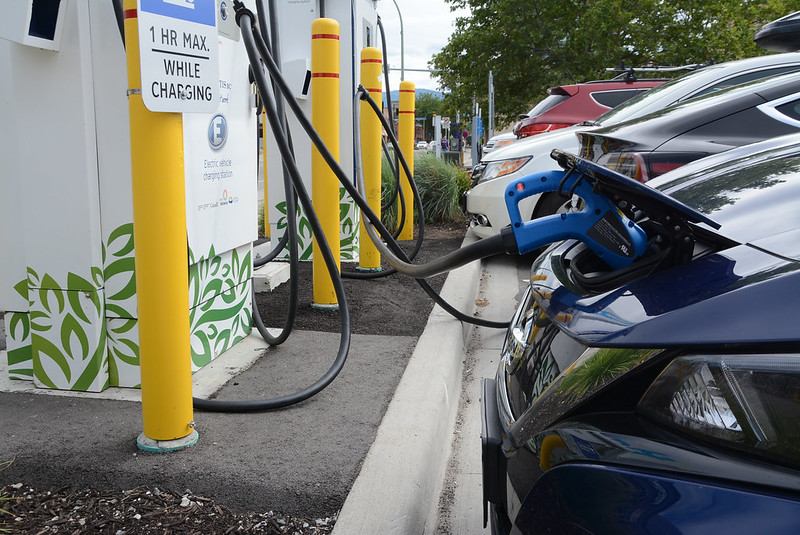Canada’s 2030 Emissions Reduction Plan (ERP) has ambitious targets to bring down greenhouse gas emissions from on-road vehicles, especially for trucks and buses.
The federal government has committed to requiring 35 per cent of the total number of medium- and heavy-duty vehicles (MHDVs) sold to be zero-emission by 2030, and 100 per cent to be zero-emission by 2040.
These MHDVs transport Canada’s goods and people between neighbourhoods, and across cities, provinces, and the country. They are essential to our economy, but also represent a significant chunk of emissions within the transportation sector.
As a result of this commitment, preliminary research from the Pembina Institute indicates that by 2030, Canada could have more than 300,000 zero-emission vehicles (ZEV) on its roads. The public and private sectors will need to make significant investments in building out the charging infrastructure and systems needed to support these vehicles.
Significant investment needed to build out charging infrastructure
The federal government is currently offering a new $547-million incentive program over four years, as well as $680-million over five years for charging infrastructure projects through its Zero Emission Vehicle Infrastructure Program (ZEVIP), which funds up to 50 per cent of the costs of high-speed charging infrastructure projects.
These are great strides, but not nearly enough to meet Canada’s zero-emission MHDV commitments, while also keeping pace with the massive investments and supportive policies driving transport electrification in the United States through the Inflation Reduction Act.
It’s time for us to step on the gas, or better yet, the electric accelerator.
ZEVs, including those powered by electric batteries and hydrogen fuel cells, are critical to decarbonizing Canada’s transportation sector, the country’s second-highest emitter. They also represent a massive opportunity to make Canada’s economy stronger and cleaner.
To build infrastructure capable of supporting Canada’s zero-emission MHDV sales targets, we anticipate that investments of at least $300-million to $500-million will be needed in 2025. The ZEVIP is a good start, but more public and private investment will be needed to reach that target.
As more ZEVs come online, funding will need to increase dramatically and we’ll need to see a total cumulative investment of $5-billion to $9-billion by 2040.
Those numbers are significant, but they represent an opportunity to grow Canada’s burgeoning ZEV industry into a massive made-in-Canada success story. This is an opportunity for investment for the public sector, as well as the private sector.
A report from Navius Research indicates that at present, Canada’s ZEV industry makes up about $1.1-billion of Canada’s GDP and employs around 10,000 people. As a result of the ERP, this industry is projected to grow to $43-billion of our GDP and employ 342,000 workers by 2040. With stronger policies, it could grow to as much as $152-billion and employ more than 1.1 million workers within that same timeframe.
Our preliminary research suggests that a policy to increase vehicle supply—often called a sales standard—will be needed if the federal government wants to come close to meeting its commitments for MHDVs. Funding infrastructure won’t be the only investment required to achieve this growth. Purchase incentive programs will also continue to be essential for the ZEV transition.
Do the easy parts first
The good news is we can do the easy parts first. By prioritizing sales standards in areas where the technology is more readily available and reliable, we can focus efforts and regulations on successfully deploying zero-emission technology in markets that can easily make the transition.
In the MHDV sector, this would mean targeting vehicles that cover moderate daily distances, have predictable routes and end the day at depots that would allow for overnight charging. Many buses and medium-duty delivery vehicles fall under this category and are also some of the highest polluters.
The growth in supply chains and infrastructure, and the improvements in technology in these areas from these initial efforts can then be leveraged to assist other markets that are more challenging to transition.
There is much to be done for Canada to meet its zero-emissions goals for the transportation sector, however smart investments and policies, specifically in MHDVs at an early stage will lay the foundation for the rest of the sector’s transition to follow, while growing Canada’s ZEV industry.






